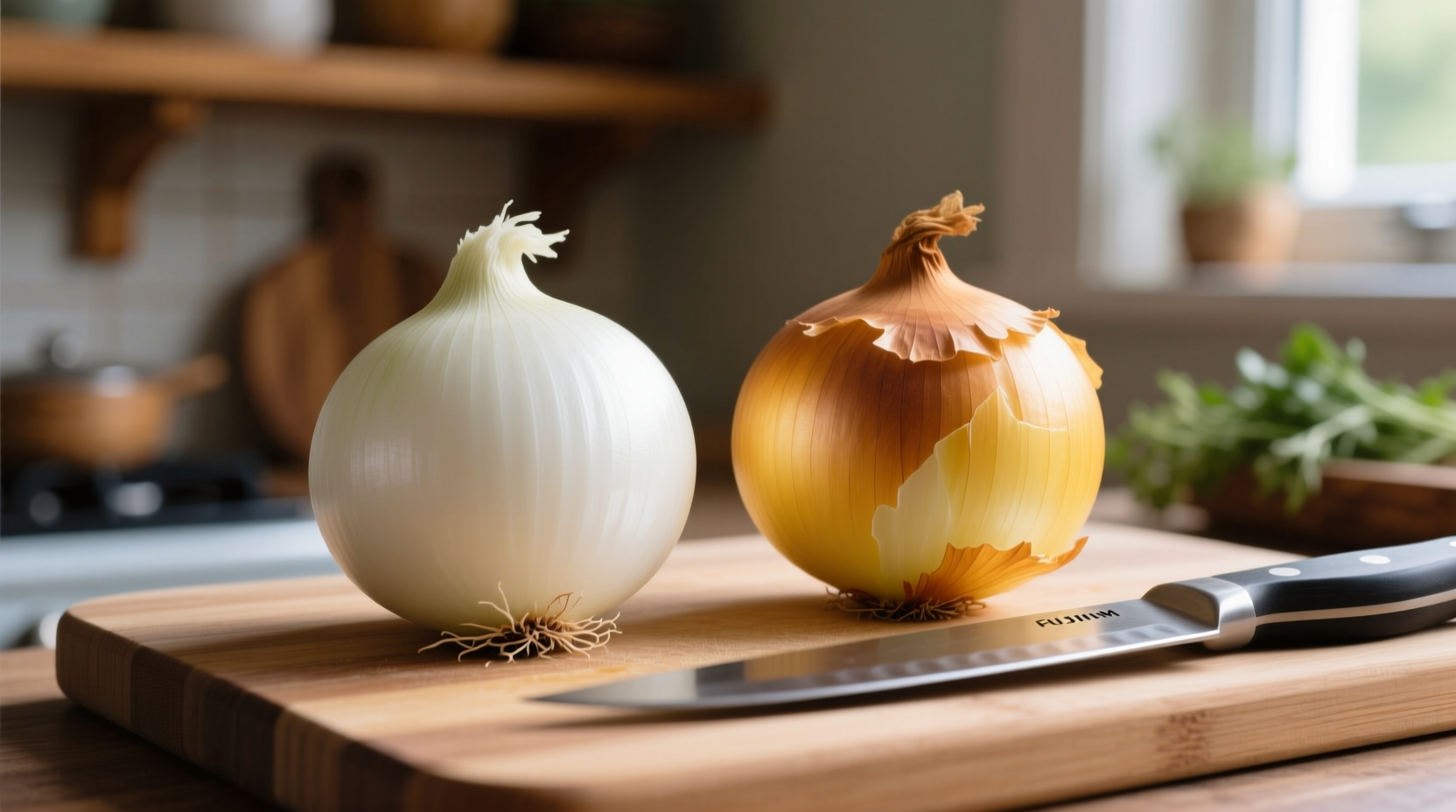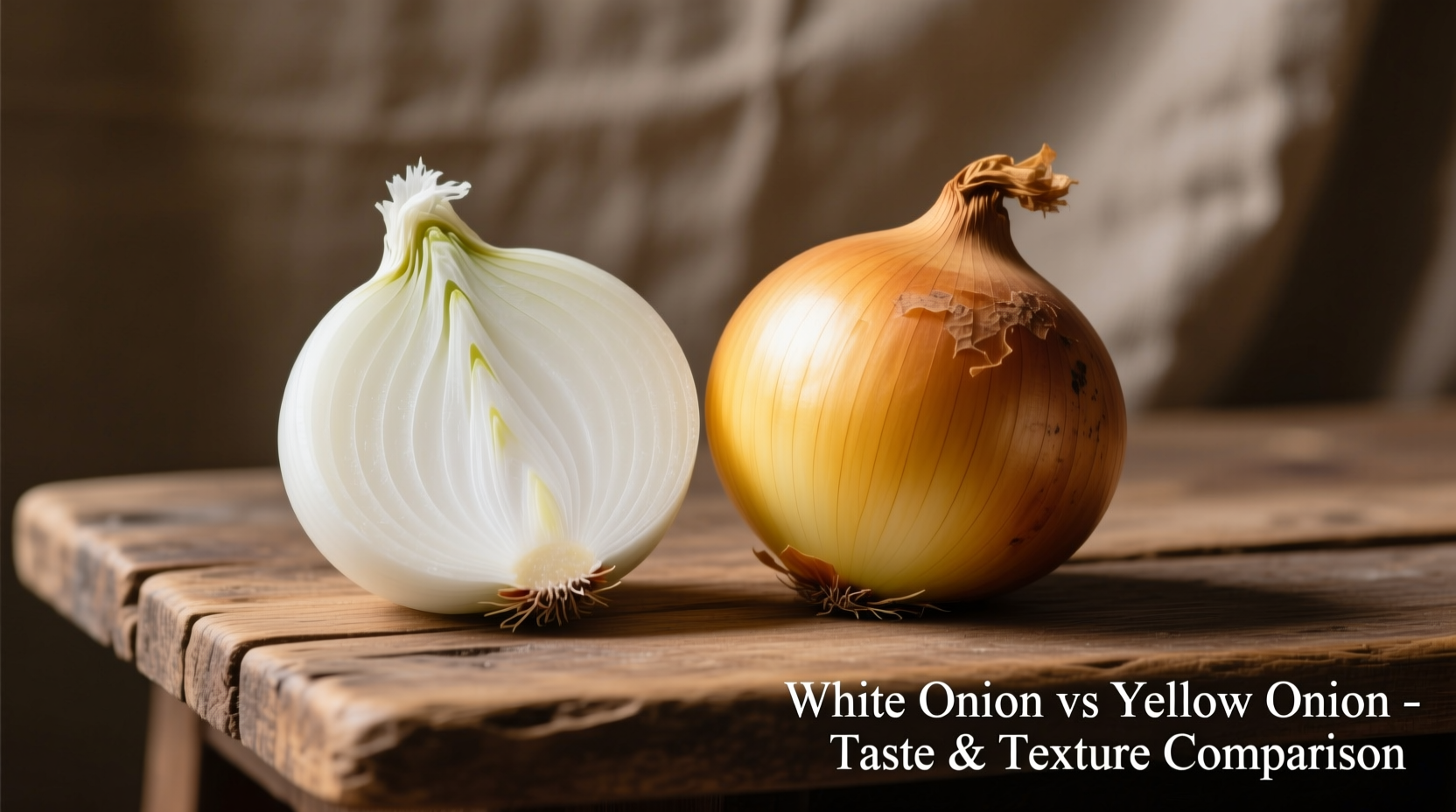White onions offer a sharper, more pungent flavor ideal for fresh applications like salsas and salads, while yellow onions provide a richer, sweeter taste perfect for caramelizing and cooking. White onions have thinner skins and higher water content (90% vs 89%), making them crispier raw but less shelf-stable. Yellow onions contain more sulfur compounds that transform into sweet flavors when cooked, explaining their dominance in cooked dishes (85% of U.S. onion production). Choose white for raw applications requiring bite, yellow for cooked dishes needing depth.
As a chef who's worked with ingredients from Michelin-starred kitchens to home cooktops, I've seen how the right onion choice can make or break a dish. That "something's missing" feeling in your cooking often traces back to using the wrong onion variety. Let's cut through the confusion with practical, kitchen-tested insights you can apply immediately.
Understanding Onion Chemistry: Why Color Matters
Onion color directly correlates with sulfur compound composition, which determines flavor development during cooking. Yellow onions contain more allyl propyl disulfide—the compound that transforms into sweet, complex flavors when heated. White onions have higher levels of thiosulfinates, creating that sharp, immediate bite perfect for fresh applications.
| Characteristic | White Onion | Yellow Onion |
|---|---|---|
| Water Content | 90% | 89% |
| Sulfur Compounds | Higher thiosulfinates | Higher allyl propyl disulfide |
| Shelf Life | 2-3 weeks refrigerated | 2-3 months in cool, dark place |
| U.S. Production Share | 5% | 85% |
| Best Cooking Method | Raw applications | Caramelizing, roasting |
Data source: USDA FoodData Central and Agricultural Marketing Resource Center
When Your Recipe Matters: Strategic Substitution Guide
Not all substitutions work equally well. Understanding context boundaries prevents culinary disasters:
Safe Substitutions (Minimal Impact)
- Using yellow onion in cooked Mexican dishes where white is traditional (the cooking process mutes differences)
- Substituting white for yellow in quick-pickled onions (both maintain crunch)
- Using either in Bloody Mary mixtures (other flavors dominate)
Risky Substitutions (Noticeable Flavor Changes)
- Using white onion in French onion soup (lacks the caramelization depth of yellow)
- Substituting yellow in fresh pico de gallo (overpowering aftertaste)
- Using white onion in onion rings (less structural integrity when fried)

Nutritional Nuances You Should Know
While both varieties provide similar nutritional profiles, subtle differences affect specific dietary needs:
- White onions contain 5% more vitamin C by weight (7.4mg vs 7.0mg per 100g)
- Yellow onions have slightly higher quercetin content (11.2mg vs 9.8mg per 100g)
- Both provide approximately 4g of fiber per medium onion
For maximum antioxidant retention, consume white onions raw—their delicate compounds degrade faster during cooking compared to yellow onions' more stable flavonoids.
Professional Chef's Practical Tips
After years of refining techniques across professional and home kitchens, here are my field-tested recommendations:
Selection Secrets
- Choose yellow onions with tight, papery skins—loose skins indicate age and moisture loss
- For white onions, look for firm bulbs without dark spots (they spoil faster than yellow)
- Heavier onions for their size indicate higher water content and freshness
Preparation Techniques
- Chill onions for 30 minutes before cutting to reduce tearing (works for both varieties)
- Use carbon steel knives for yellow onions—they react less with sulfur compounds than stainless steel
- For white onions in salsas, soak cut pieces in ice water for 10 minutes to mellow sharpness
Storage Solutions
Yellow onions thrive in cool, dark pantries (55-60°F), while white onions prefer refrigerator crisper drawers. Never store either variety near potatoes—the gases accelerate spoilage. For cut onions, use airtight containers and consume within 7 days.
Avoiding Common Onion Mistakes
Even experienced cooks make these errors that compromise dish quality:
The Caramelization Trap
Many home cooks rush yellow onion caramelization, creating bitter instead of sweet results. Proper caramelization requires 35-45 minutes over medium-low heat. The natural sugars need time to develop—patience yields dramatically better flavor.
Raw Application Errors
Using yellow onions raw in salads or salsas often creates an unpleasant aftertaste. If substituting, reduce quantity by 25% and add a pinch of sugar to counter bitterness. White onions provide cleaner flavor in uncooked applications.
Seasonal Availability Missteps
Yellow onions have year-round availability due to storage capabilities, while white onions peak May-September. During off-season, white onions often come from Mexico with slightly different flavor profiles—adjust recipes accordingly.











 浙公网安备
33010002000092号
浙公网安备
33010002000092号 浙B2-20120091-4
浙B2-20120091-4